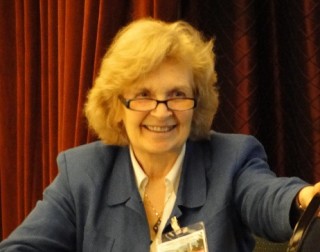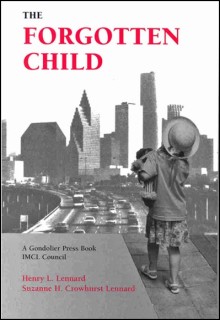Read the start of this article below; to view full article you need to be a PlannersWeb member. Already a member? — be sure you’re logged-in. Not a member? Consider joining the PlannersWeb.
 What’s the matter with kids today? In large part it’s that we’re not providing them with a child-friendly built environment. That was the message at the heart of Suzanne Crowhurst Lennard’s talk at the International Making Cities Livable conference in Portland, Oregon.
What’s the matter with kids today? In large part it’s that we’re not providing them with a child-friendly built environment. That was the message at the heart of Suzanne Crowhurst Lennard’s talk at the International Making Cities Livable conference in Portland, Oregon.
Lennard, who holds a PhD in architecture, has written extensively on how the built environment affects our mental, social, and physical health, including Livable Cities Observed and The Forgotten Child (both co-authored with her late husband Henry Lennard — with whom she also co-founded the IMCL conferences in 1985).
As Lennard pointed out in her remarks to conference attendees, in many places today the built environment has, unfortunately, been a key factor in children being less independent and physically fit than they should be.
Editor’s note: In terms of health impacts, take a look back at what Dr. Richard Jackson had to say about the impacts of not having walkable communities. As Jackson pointed out, obesity rates have been rapidly rising — especially among children. Not only will this be bad for these kids as they grow up with much higher rates of diabetes and other health problems, but it will be bad for the country — with all of us absorbing part of the huge medical expenses this will entail.
 Lennard spoke about the developmental impacts that the lack of vigorous outdoor activity and exploration can have on children.
Lennard spoke about the developmental impacts that the lack of vigorous outdoor activity and exploration can have on children.
The built environment of too many suburbs — and cities as well — fails to provide children with good, safe places to play, explore, and gain independence, she said. What’s more, parents, out of fears about safety, often keep their children at home or limit their play to more formal playground areas, where there’s less opportunity for kids to gain self-confidence. (More on this later in the post).
“Kids need to develop motor skills,” Lennard commented, “for example, by climbing trees, biking, or skateboarding.”
Lennard pointed out that “Edward O.Wilson wrote that nature is the most information rich environment children will ever encounter.” While agreeing, she added: “but the city can also provide interesting, strange, and wonderful things for kids to learn from.”
You must be logged in or a PlannersWeb member to read the rest of the article.